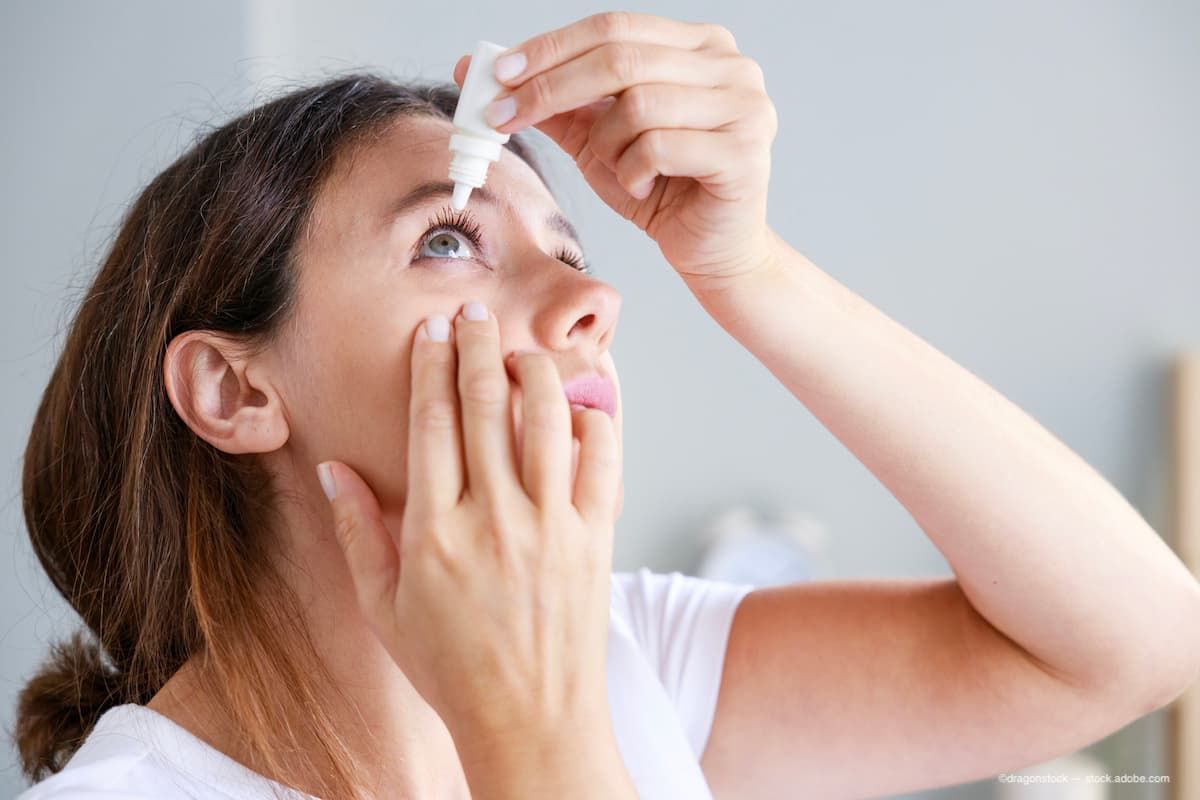Article
A dangerous eye infection from EzriCare eye drops, months before the CDC’s warning
Author(s):
In November 2022, doctors in Cleveland diagnosed a patient with a corneal ulcer with a Pseudomona aeruginosa infection. The patient acquired the infection from tainted EzriCare eye drops months before the CDC’s February 2023 warning.
A 72-year-old female, was diagnosed with a corneal ulcer, caused by infection by the bacterium Pseudomonas aeruginosa (Image Credit: AdobeStock/dragonstock)

The Centers for Disease Control and Prevention in February sounded the alarm against using EzriCare eye drops because bottles of the product had been linked to drug-resistant bacterial infections causing vision loss and even death. But tainted bottles may have been causing problems long before then.
A group of researchers and physicians from Cleveland, Ohio, described in a study,1 published in Antimicrobial Agents and Chemotherapy, a case from November 2022.
According to researchers, the patient, a 72-year-old female, was diagnosed with a corneal ulcer, caused by infection by the bacterium Pseudomonas aeruginosa. Eventually, infectious disease physicians and microbiologists identified her contaminated eye drops as the source of the infection.
P. aeruginosa is a pathogenic, gram-negative bacterium that’s resistant to treatment with most antibiotics. It can cause swimmer’s ear — a painful infection of the outer ear canal — and more serious conditions, especially in people with compromised immune systems. But the case in Cleveland was unusual, Morgan Morelli, MD, the study’s first author and an infectious disease fellow at the hospital, said in a news release.
“I’ve never recovered it from an eye,” she said in the news release.
Because P. aeruginosa isn’t usually found in eye infections, she said, finding the right diagnosis proved to be an arduous task.
“It required a lot of thinking and digging to figure out what was going on,” she said in the release. “And we never thought it was related to a global manufacturing issue.”
According to researchers, the patient initially reported to an outpatient eye clinic with blurry vision. From there, she was sent to the emergency department at the hospital, where she was evaluated by ophthalmologists. They cultured the infection, prescribed a combination of strong antibiotic eye drops, and sent her home. But the next day, the eye was worse—and she visited a cornea specialist.
Moreover, the woman had noticed a yellow discharge on her pillow, and she hadn’t been swimming, the study noted.
“We wondered if she’d accidentally touched something, or there was some freak accident,” to explain the infection, Morelli said in the release.
At that point, Morelli said, her case was referred to microbiologists and infectious disease experts at the hospital. Infectious disease specialist Scott Fulton, MD, asked the patient’s husband to bring in her eye drops for testing. A sample from the patient was sent to the lab of Robert Bonomo, MD, an expert in gram-negative, drug-resistant bacteria at Case Western Reserve University School of Medicine.
Then, Morelli said, the puzzle started to come together. Bonomo’s lab identified a P. aeruginosa isolate that matched genetic material found in the EzriCare artificial tear eye drops she’d been using. Then researchers connected the eye infection—and the ulcer it had caused—to the contaminated drops.
Treatment was tricky, Morelli said. The isolate was resistant to any antibiotics that could be administered by way of the patient’s eye. Physicians treated the patient with a strong antibiotic, cefiderocol, that has some activity against gram-negative bacterium, as well as two other topical antibiotics.
The injury to the woman’s eye started to improve, Morelli said in the news release, but it’s unclear whether the patient will ever regain total vision in the eye.
Since issuing the warning in February, the CDC has identified infectious cases due to P. aeruginosa as early as spring 2022.
“I think it took a while for this to be put together, in terms of what all these patients had in common,” said Morelli. Although the contaminated product has been pulled from stores and can no longer be purchased, it may still pose a risk.
People may still have the eye drops on their medicine cabinet shelves, Morelli said. She also hopes that the ophthalmologists and optometrists who may be the first physicians to see future patients with this infection will know what to look for.
“We don’t always get this detailed of a history or ask someone to bring in over-the-counter medicine they’re using,” she concluded. “We really wanted to raise awareness.”
Reference:
1. Morgan K. Morelli, Amy Kloosterboer, Scott A. Fulton, Jennifer Furin, Nicholas Newman, Ahmed F. Omar, Laura J. Rojas, Steven H. Marshall, Mohamad Yasmin, Robert A. Bonomo. Investigating and Treating a Corneal Ulcer Due to Extensively Drug-Resistant Pseudomonas aeruginosa. Antimicrobial Agents and Chemotherapy. Published May 11, 2023. Accessed May 16, 2023.DOI: https://doi.org/10.1128/aac.00277-23
Newsletter
Don’t miss out—get Ophthalmology Times updates on the latest clinical advancements and expert interviews, straight to your inbox.




